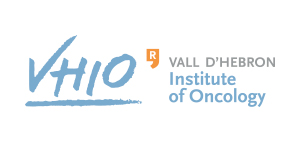LAS - Laboratory Animal Service
Services
The purpose of the housing rooms is to:
- Guarantee compliance with every legal and ethical rule relating to the use of animals for experimentation and for other scientific purposes.
- Offer accommodation for the maintenance, care and well-being of experimentation animals.
- Carry out periodic health controls to keep the animals in a good state of health and thereby obtain reliable and reproducible results.
- Meet the needs of users by providing them with the advice, equipment and experimentation services required for conducting their research with experimentation animals;
Equipment
Equipment and facilities
The LAS capacity is divided up into seven experimental areas, a technical material-sterilisation and management area, an administrative area, a refrigeration storage area and an area for types III and IV waste. All these areas are distributed between the two underground floors, enabling experimental procedures to be conducted under several biosafety – specific-pathogen free (SPF), conventional and biosafety level 2 (BSL2) – and microbiological conditions.
In addition, it also has a preclinical imaging platform (PIP) with rodent-dedicated optical, micro-tomographic, micro-ultrasound and positron-emission (PET CT) imaging systems.
The LAS is distributed in
- Conventional Areas 1 and 2 (CNV). Located on two floors, with a total of eight handling rooms for carrying out experimental procedures and surgery (equipped with oxygen, vacuum and CO2 supplies, inhalation anaesthesia equipment, biosafety hood and surgical microscopes), and five rooms housing mice and rats.
- Quarantine areas (x2) and BSL2 (x2), each equipped with a housing room and a handling room. These rooms are equipped with modern micro-insulators and equipment for carrying out experimental procedures.
- SPF barrier area for immunodeficient and immunocompetent mice. Two rooms equipped with absolute filters, specific access changing-room, sterile access system (SAS) for the sterile facility entrance, steam autoclave with double door for sterilising food, absorbent materials, cages and accessories, and a water-sterilisation system. It also has handing rooms equipped with oxygen, vacuum and CO2 supplies and inhalation anaesthesia equipment.
- Service and corridor areas. With a cleaning area with rack washers and feeding bottle washers, material decontamination SAS, autoclave, clean material storage, cage-preparation room and general storage.
Team
The LAS is staffed by a Unit head, an appointed veterinary surgeon, experts specialising in rodent-colony management and experimental models, care staff and technical area staff (support and cleaning).


